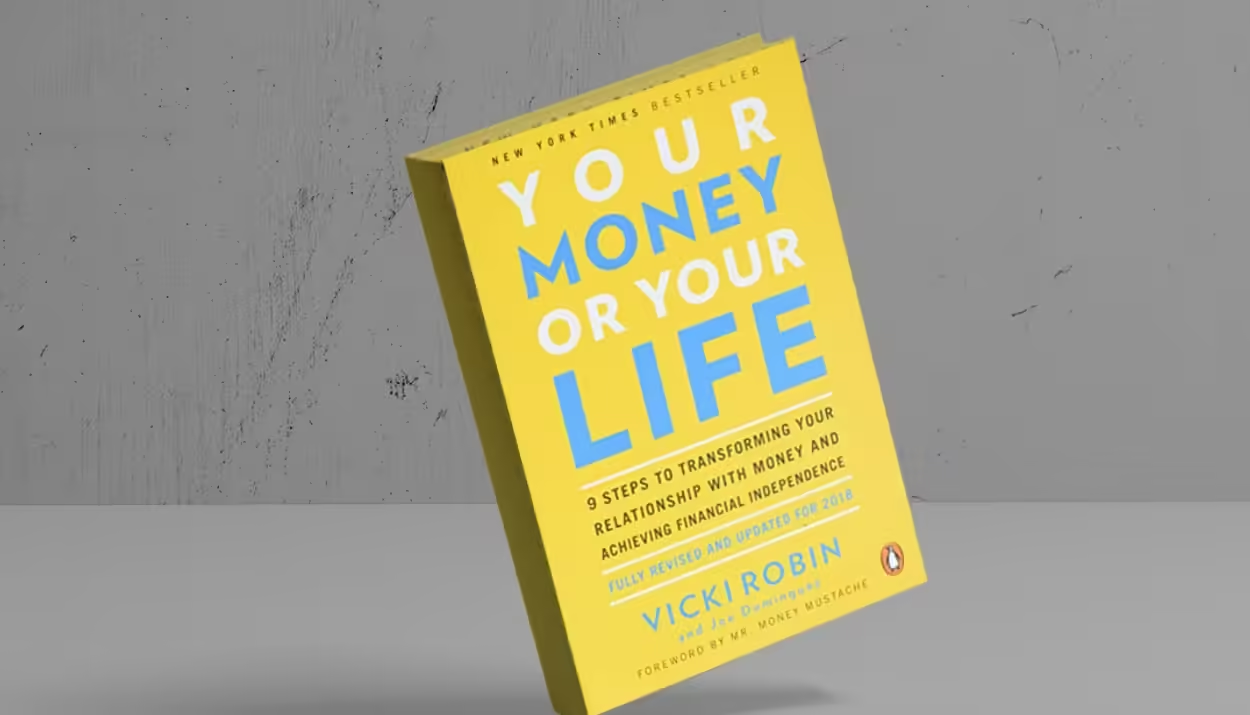In today’s fast-paced world, it’s easy to spend money out of necessity or convenience, often overlooking whether those expenditures align with what truly matters to us. “Your Money or Your Life” by Joe Dominguez and Vicki Robin offers a fresh perspective on this issue, challenging readers to rethink their relationship with money and its role in their lives.
The book says that money is more than just a medium of exchange; it’s a reflection of our life energy—the time and effort we invest in earning it.
One of the book’s central ideas is the concept of the “real hourly wage,” which takes into account not just the time spent working but also additional costs such as commuting, work attire, and taxes. This calculation helps readers understand the true cost of their purchases in terms of the life energy spent.
A financial wake-up call
Described as a “financial intervention,” “Your Money or Your Life” prompts readers to scrutinize every purchase they’ve made. It encourages a conscious approach to spending, where financial independence is not just a distant goal but a means to live a more purposeful and value-driven life.
Here are some of the key takeaways from the book:
- Creating a budget with integrity
Rather than simply tracking expenses, the book advocates for creating a budget that aligns with one’s personal values and long-term goals. This approach, termed “integral budgeting,” ensures that spending supports true aspirations, helping individuals resist the pressures of immediate desires or societal expectations. - The importance of guilt-free spending
Dominguez and Robin introduce the concept of guilt-free spending, which involves making conscious, intentional choices about how to use money based on a clear understanding of personal priorities. By aligning expenditures with values and goals, individuals can enjoy their money without regret, eliminating the financial guilt often associated with unplanned spending. - The power of financial tracking and reflection
The authors emphasize the importance of meticulously tracking every penny spent. This practice of regular financial reflection helps identify spending patterns, assess progress toward financial goals, and make necessary adjustments. It encourages prioritizing experiences and investments that bring long-term happiness over short-term gratification. - The crossover point
The book introduces the concept of the “crossover point,” the moment when passive income (from investments, savings, etc.) exceeds living expenses. Achieving this point signifies financial independence, offering the freedom to choose how to spend time without being driven by the need to earn more money. - Questioning every purchase
Before making a purchase, the book suggests asking whether the item is truly needed and whether it aligns with one’s values and goals. This mindfulness helps reduce impulse spending and focus on what truly matters. - The concept of life energy
The idea of “life energy” encourages viewing expenditure not just in monetary terms but in terms of the hours of life traded for those purchases. This perspective helps in making more mindful financial decisions that align with personal values. - The fulfillment curves
Dominguez and Robin introduce the fulfillment curve, which illustrates that beyond a certain point, additional spending yields minimal extra satisfaction. This insight encourages focusing on spending that truly enhances one’s life, rather than pursuing material satisfaction. - The “enough” principle
The book advocates for defining what constitutes “enough” in one’s life. By setting clear, personal benchmarks for income and lifestyle, individuals can avoid the trap of endless accumulation and instead focus on their well-being. - Investing in personal growth
Beyond financial investments, the book encourages investing in personal growth and skills development, which can lead to increased earning potential and a more fulfilling career.
“Your Money or Your Life” is not just a guide to financial independence; it’s a call to align one’s lifestyle with deeply held values. By following the book’s steps, readers can find a balance between money and life, ensuring they don’t have to choose between the two. Ultimately, the book teaches that life isn’t about earning and spending as much as possible but about being in control of one’s finances and living a life of purpose and fulfillment.






